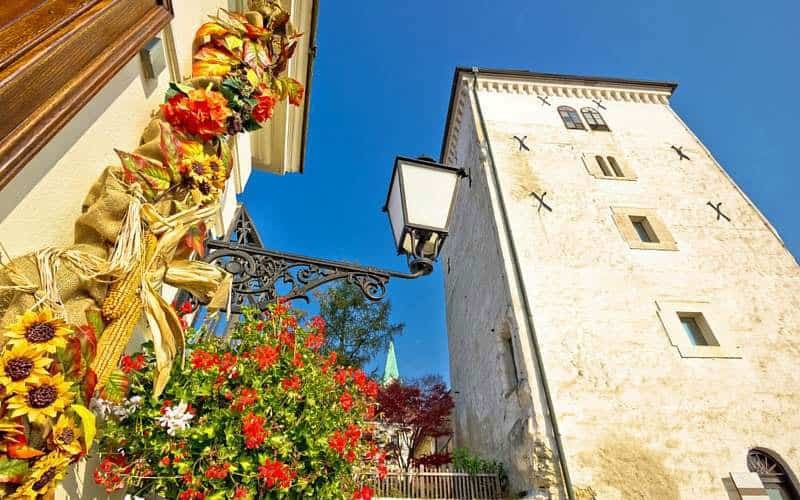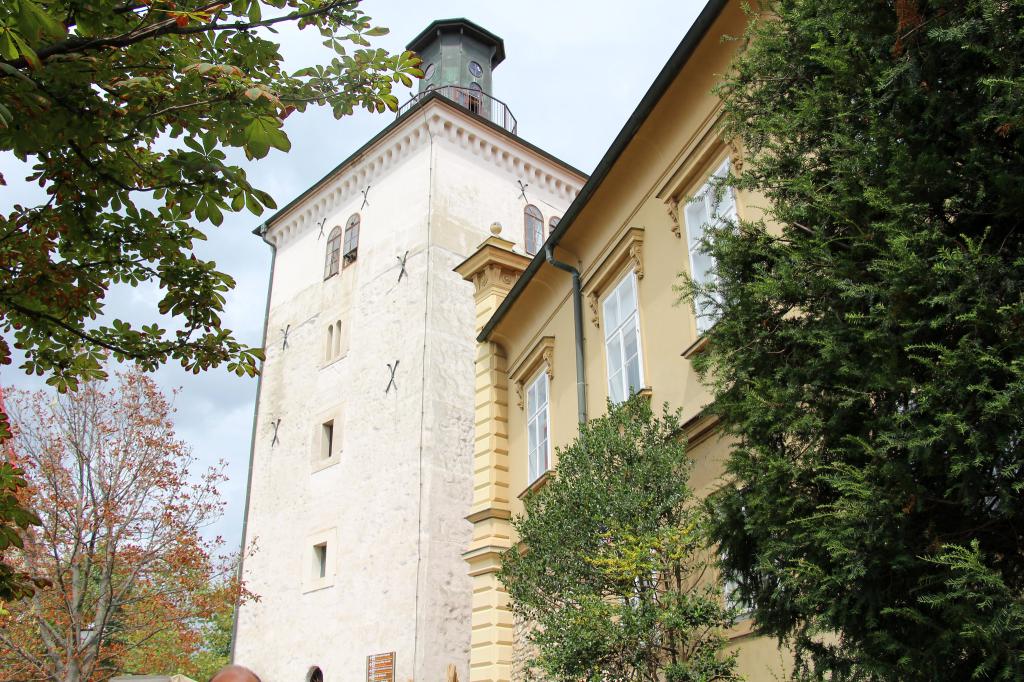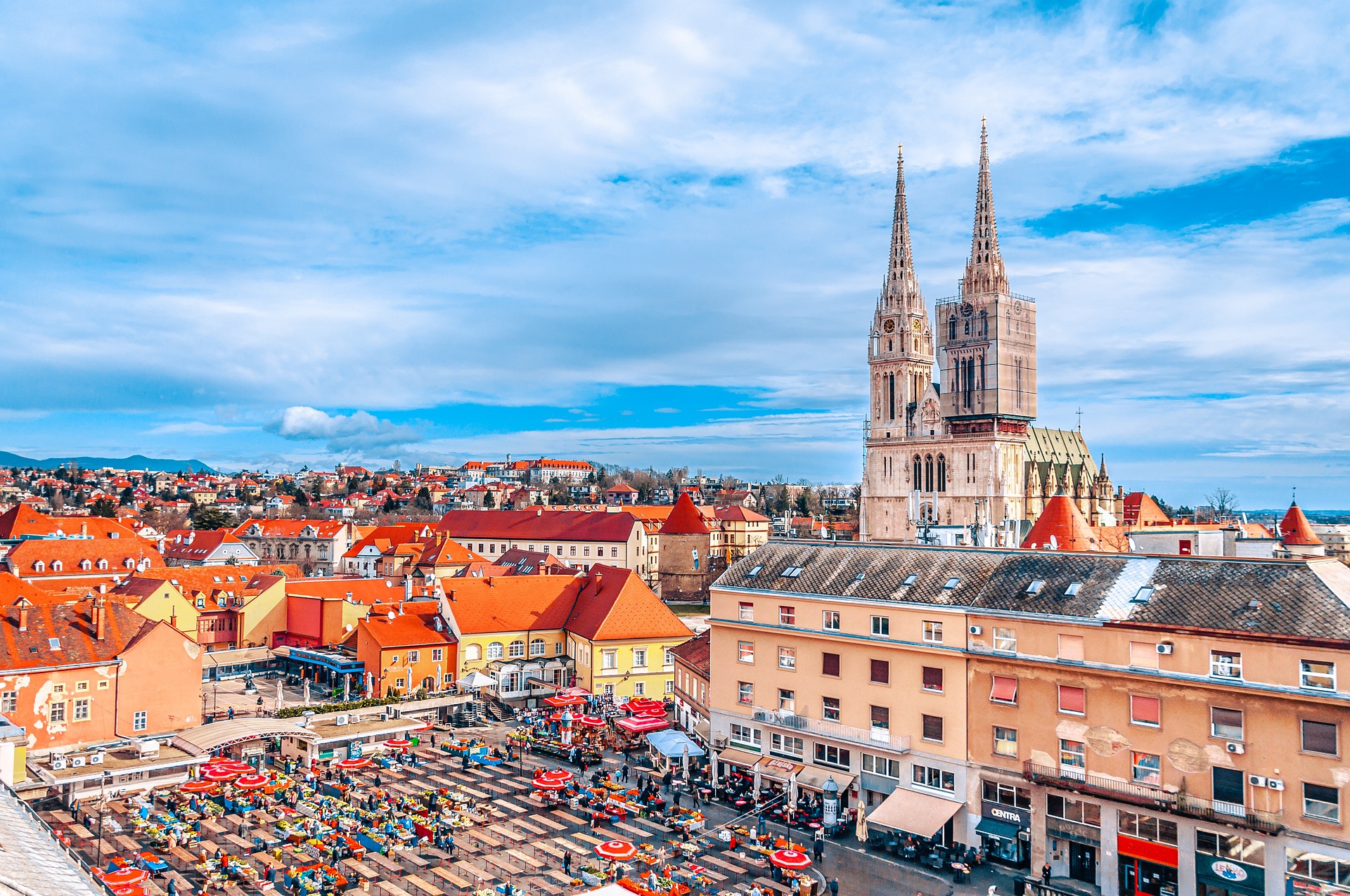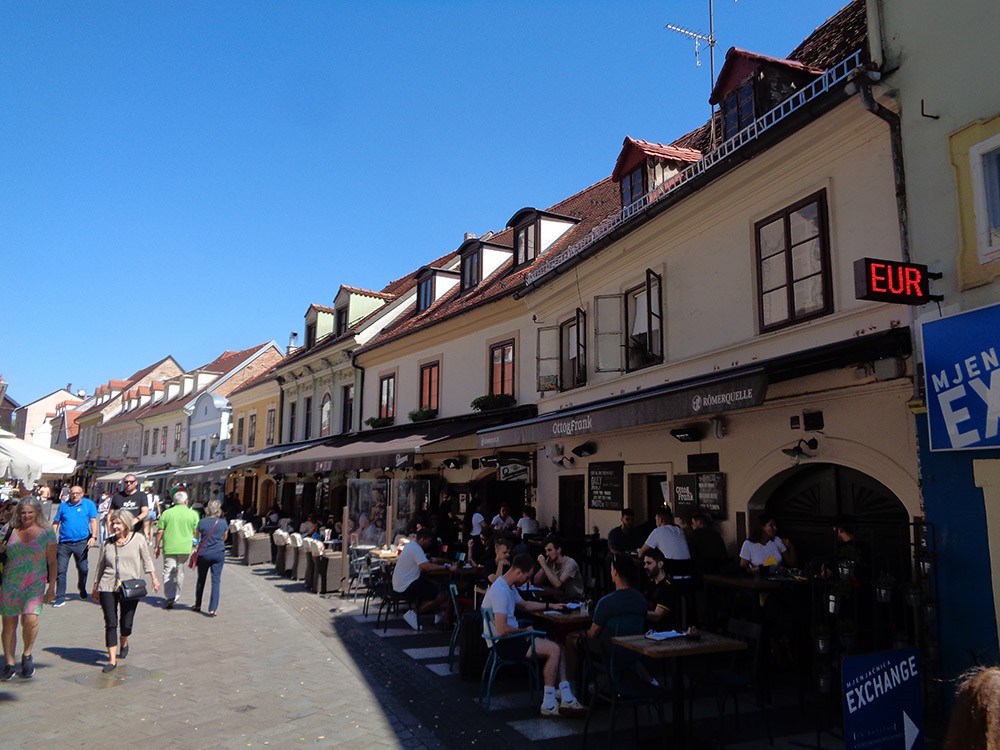

Nestled within the heart of Zagreb, Lotrščak Tower stands tall as an iconic symbol of the city's rich history and architectural prowess. This medieval tower, dating back to the 13th century, has not only witnessed centuries of Zagreb's evolution but has also played a pivotal role in its defense and cultural heritage.
Lotrščak Tower, with its distinct structure and commanding presence, offers visitors a captivating journey through time. The tower's architectural finesse showcases a blend of various influences, reflecting the cultural tapestry that has shaped Zagreb over the years. Its stone facade, medieval charm, and the promise of panoramic views from the observation deck make it a must-visit destination for history enthusiasts and tourists alike.
Adding to its allure is the daily firing of the Grič Cannon, a tradition dating back to the 19th century. This thunderous event not only reverberates through the city but also echoes the tower's historical significance in Zagreb's defense strategy.
As we delve into the intriguing tale of Lotrščak Tower, this blog will unravel its historical roots, shed light on its role in Zagreb's defense, and uncover the legends and folklore that surround this medieval gem. Join us on this journey through time as we discover the timeless charm and cultural significance of Lotrščak Tower in Zagreb.

The Lotrščak Tower in Zagreb boasts a captivating historical background that weaves through the centuries, making it a prominent landmark in the city's narrative. Initially built to safeguard the southern gate of Gradec, the historical upper town of Zagreb, the tower's origins date back to the tumultuous times of the Mongol invasions. Over the years, it underwent various renovations and adaptations, aligning itself with prevailing architectural trends while retaining its medieval charm.
In an era marked by invasions and conflicts, Lotrščak played a pivotal role in the defense strategy, offering a vantage point for monitoring the surrounding terrain and providing a formidable barrier against potential threats.
During times of sieges and battles, the tower served as both a lookout post and a defensive stronghold. Its strategic location allowed defenders to observe approaching forces and respond effectively to protect the city. The historical significance of Lotrščak Tower in Zagreb's defense is further underscored by its association with the Grič Cannon. The firing of the cannon at noon, a tradition dating back to the 19th century, not only served a practical purpose in signaling the closing of the city gates but also symbolized the city's resilience and commitment to safeguarding its heritage.
Beyond its defensive role, Lotrščak Tower also served as a symbol of authority, housing the bell that regulated the city's daily life and signaled the closing of the gates. This historical edifice witnessed the ebb and flow of Zagreb's fortunes, from medieval battles to the city's transformation into a vibrant European capital.
Today, as visitors ascend the tower and gaze upon the panoramic views of Zagreb, they are transported back to a time when the city's survival depended on structures like Lotrščak. Exploring the role of Lotrščak Tower in Zagreb's defense unveils a tale of strategic foresight and unwavering commitment to preserving the city's integrity throughout the ages.
This medieval marvel is not merely a stone structure; it is steeped in tales that echo through the corridors of time. Legends abound, and one such tale whispers of a mythical creature said to have dwelled near Lotrščak, adding an air of mystery to the tower's storied past. Folklore enthusiasts will find delight in uncovering these age-old stories that have been passed down through generations, intertwining the tangible history of the tower with the intangible magic of Zagreb's cultural heritage.
Local storytellers have woven narratives around Lotrščak Tower, bringing to life characters and events that transcend the boundaries of reality. These tales often highlight the tower's significance in Zagreb's folklore, portraying it as a guardian with mystical connections to the city's fate. As we unravel the mythical threads associated with Lotrščak, we invite you to explore the deeper layers of its narrative, where history and folklore dance together, creating a tapestry that adds a unique and enchanting dimension to this iconic Zagreb landmark. Whether you are a folklore enthusiast or simply curious about the hidden tales, Lotrščak Tower beckons with its magical allure, inviting you to discover the legends that have contributed to its enduring charm.

Lotrščak Tower’s survival through historical challenges underscores its strategic importance in the city's defense, facing the brunt of invasions and conflicts that marked various epochs. Over the years, Lotrščak Tower underwent multiple renovations and adaptations, each reflecting the architectural styles and needs of the times. These transformations, born out of necessity and a commitment to preservation, are integral to the tower's rich historical tapestry.
During the medieval era, the tower faced challenges synonymous with fortified structures, serving as a crucial component in Gradec's defense against external threats. The strategic significance of Lotrščak Tower made it a target during conflicts, subjecting it to the wear and tear of battle. However, the resilience displayed in the face of these challenges stands as a testament to the enduring spirit of Lotrščak Tower. Exploring the historical challenges that this iconic structure has overcome provides a fascinating glimpse into the dynamic narrative of Zagreb's past and the integral role Lotrščak Tower played in shaping the city's destiny.
Beyond the medieval charm of Lotrščak Tower, a treasure trove of attractions and points of interest awaits visitors in the vicinity, creating an immersive experience in the heart of Zagreb. Just steps away, St. Mark's Church showcases an exquisite display of medieval and neo-Gothic architecture, with its colorful tiled roof depicting the coats of arms of Zagreb and Croatia. A leisurely stroll leads to the Stone Gate (Kamenita Vrata), a historical portal that has withstood the test of time, housing a revered painting of the Virgin Mary. The Dolac Market, a bustling open-air market, beckons with its vibrant array of fresh produce, local crafts, and the authentic hustle and bustle of daily life.
For art enthusiasts, the Museum of Broken Relationships, situated nearby, offers a unique and emotionally resonant exploration of personal stories through donated mementos. The Croatian Museum of Naïve Art, another gem in proximity, showcases an impressive collection of naive and outsider art, providing a captivating contrast to the more traditional art scenes.
The vibrant Tkalciceva Street, renowned for its lively atmosphere and diverse eateries, invites visitors to savor local flavors and soak in the city's dynamic energy. Additionally, the Zagreb Funicular, one of the world's shortest funiculars, provides a charming journey from the Lower Town to the Upper Town, offering panoramic views of the city.
Exploring the surroundings of Lotrščak Tower becomes a delightful adventure, with a mosaic of historical, cultural, and culinary attractions seamlessly integrated into the cityscape. Whether you're drawn to art, history, or gastronomy, the area surrounding Lotrščak Tower ensures a rich and diverse experience for every visitor, making it a pivotal hub for those eager to uncover the many facets of Zagreb's vibrant character.

Conclusion
The journey through the historical tapestry of Lotrščak Tower in Zagreb unveils a captivating narrative that transcends centuries, embodying the city's resilience, cultural richness, and architectural splendor. From its medieval origins as a strategic defense post to its enduring role in folklore and daily life, the tower stands as a symbolic guardian of Zagreb's heritage. The echoes of the Grič Cannon, resonating through time, serve as a reminder of the tower's integral part in the city's daily rhythm and historical defense strategies.
As visitors ascend the tower and gaze upon the panoramic views, they not only witness the city's skyline but also become immersed in the layers of history that Lotrščak has witnessed. The surrounding attractions, from St. Mark's Church to the Museum of Broken Relationships, create a vibrant tapestry of experiences, making the area a cultural hub within Zagreb.
Lotrščak Tower did overcome a lot of challenges during time and it still stands as an enduring symbol of Zagreb's past and present. Whether you're a history enthusiast, folklore lover, or art connoisseur, exploring Lotrščak Tower offers a profound connection to the city's soul, inviting all to partake in the timeless beauty and stories etched into the stones of this iconic landmark.
Sit & Meet is a project in Zagreb that includes unique walking tours where you can meet Croatian innovators and geniuses for a coffee along with seeing all the famous city sights.